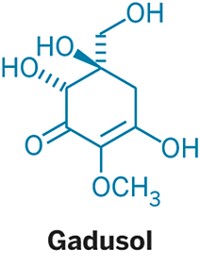Advertisement
Grab your lab coat. Let's get started
Welcome!
Welcome!
Create an account below to get 6 C&EN articles per month, receive newsletters and more - all free.
It seems this is your first time logging in online. Please enter the following information to continue.
As an ACS member you automatically get access to this site. All we need is few more details to create your reading experience.
Not you? Sign in with a different account.
Not you? Sign in with a different account.
ERROR 1
ERROR 1
ERROR 2
ERROR 2
ERROR 2
ERROR 2
ERROR 2
Password and Confirm password must match.
If you have an ACS member number, please enter it here so we can link this account to your membership. (optional)
ERROR 2
ACS values your privacy. By submitting your information, you are gaining access to C&EN and subscribing to our weekly newsletter. We use the information you provide to make your reading experience better, and we will never sell your data to third party members.
Environment
Shining A Light On Nanotoxicity
Nanomaterials: One class of carbon nanotubes produces reactive oxygen species under sunlight
by Laura Cassiday
August 12, 2010

Someday industry may produce large amounts of single-walled carbon nanotubes (SWNTs): Their unique physical and chemical properties make them attractive raw materials for a range of electronic and biomedical applications, such as miniaturized circuitry, diagnostic imaging, and drug delivery.
Yet scientists know very little about how these nanomaterials could affect the environment. Now researchers demonstrate that one class of SWNTs produces cell-damaging reactive oxygen species (ROS) when dispersed in water and exposed to sunlight, which could affect the nanotubes’ ecological stability and toxicity (Environ. Sci. Technol., DOI 10.1021/es101073p).
"If we're going to produce and dispose of large quantities of SWNTs, we need to know how they’re transformed in the environment and whether their products are more or less harmful than the parent materials," says environmental engineer Chad Jafvert of Purdue University.
In laboratory experiments, carbon-based nanomaterials have produced ROS when scientists irradiated them with a laser. These oxygen-containing compounds with unpaired valence shell electrons can oxidize and damage an organism's DNA, lipids, and proteins. But scientists did not know whether the nanomaterials generate these highly reactive compounds under natural conditions.
To find out, Jafvert and colleagues simulated environmental exposure by shining natural sunlight on glass tubes filled with carboxylated SWNTs suspended in water. The researchers then monitored ROS production with specific chemical scavengers for three ROS: singlet oxygen, superoxide anion, and hydroxyl radical.
They found that after irradiating the tubes for up to 80 hours, carboxylated SWNTs produced all three ROS types. When the scientists suspended the nanomaterials in acidic water and irradiated the tubes, the SWNTs clumped together and came out of suspension, which suggests that the ROS can change the materials’ normal chemistry by reducing their charge repulsion and causing them to aggregate. These chemically-altered SWNTs or the ROS themselves could be toxic to aquatic organisms, the researchers say.
But the environmental significance of these processes is still unknown, Jafvert says, because naturally-occurring materials called humic acids also generate ROS in water. Also the researchers do not know if the SWNTs themselves or chemicals from the manufacturing process create the reactive species.
Still the study "is the first to show that carboxylated SWNTs can produce a variety of ROS under natural conditions," says Pedro Alvarez, environmental engineer at Rice University. He says that the findings will help scientists understand the engineered materials' toxicity when they are released into the environment.




Join the conversation
Contact the reporter
Submit a Letter to the Editor for publication
Engage with us on Twitter